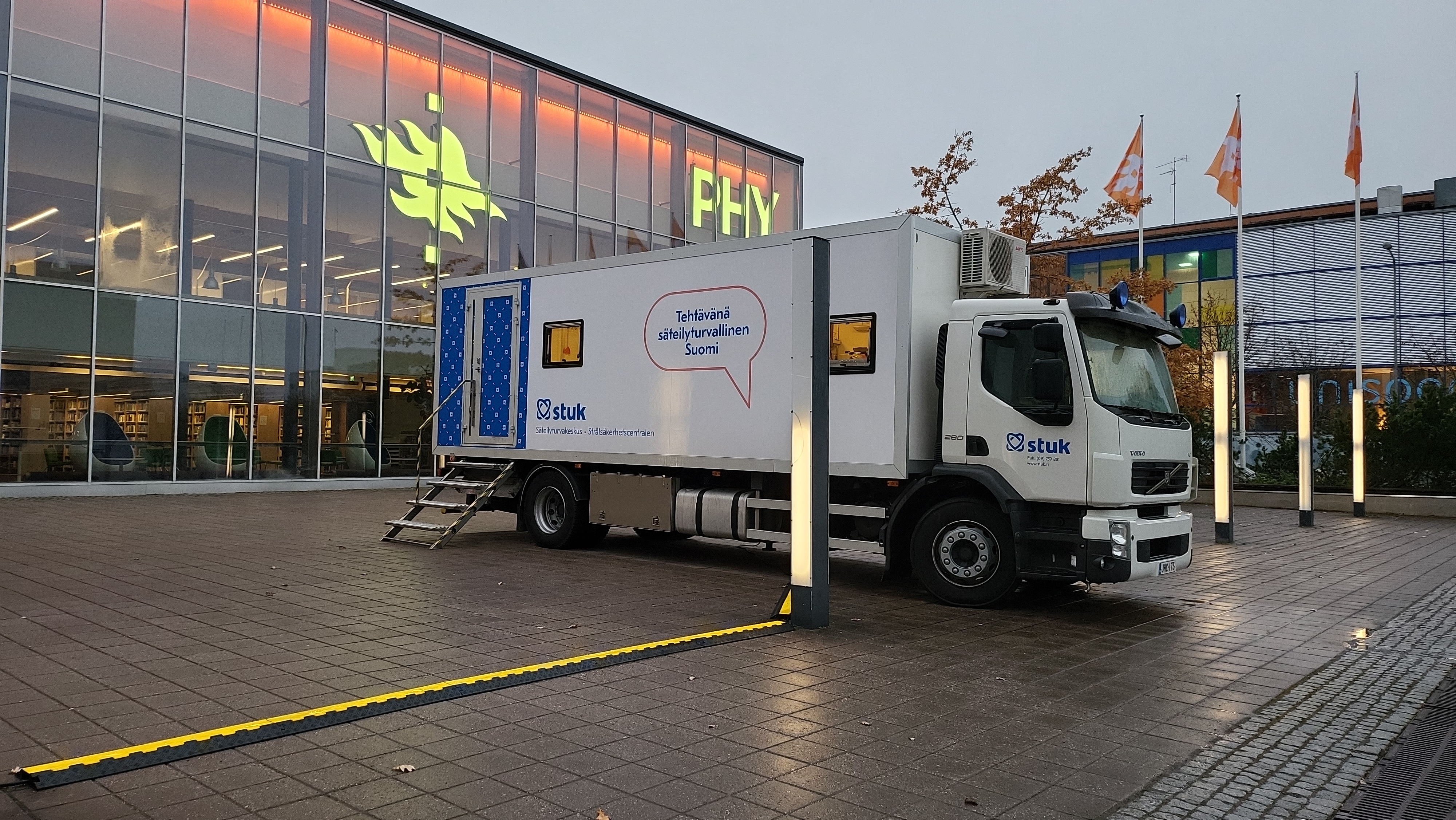Increasingly lower measurements of radiation in people
The Radiation and Nuclear Safety Authority will measure the radioactivity of students and staff at the Kumpula campus of the University of Helsinki this week. Measurements will be carried out in Tampere next week and in Rovaniemi after the turn of the year.

Radioactivity measurements of the population began in Finland in the 1960s, so the Radiation and Nuclear Safety Authority (STUK) has strong knowledge of the radioactivity of Finns and its changes over the past 60 years. So we know that there are smaller and smaller amounts of artificial radioactivity in people.
According to STUK’s Senior Inspector Sinikka Virtanen, population surveys are carried out at universities, as it has been easy to arrange them there and there are many volunteers who are interested in the surveys. Measurements are now being carried out at universities for the second time.
Up-to-date information on the radioactivity of the population is important in order to detect any changes that may occur.
Radiation exposure caused by artificial substances generated through human activity in Finns is decreasing year by year which, according to Sinikka Virtanen, means that it is not always possible to reliably detect radioactivity with measurements. Investigating the radioactivity of the population is becoming increasingly challenging.
Cesium is becoming more rare, natural radioactive substances persist
The most significant artificial radioactive substance derived from human activity in Finns is the caesium isotope 137, Cs-137. When population radioactivity measurements began in Finland in the 1960s, caesium came from nuclear weapon tests carried out in the atmosphere. At that time, the highest radiation doses were measured from reindeer breeders in Lapland. The radioactive substances carried by the air accumulated in reindeer meat through lichen and from there to reindeer breeders.
The next time radioactive caesium spread to Finland was in the spring of 1986. The radioactivity spread by the worst nuclear power plant accident in history in Chernobyl in the current Ukraine region was also found in Finland and in Finns. This time, especially in Päijät-Häme and Central Finland.
There are also naturally occurring radioactive substances, such as potassium isotope 40, in all Finns. In addition, all Finns have some uranium and thorium from the bedrock and their disintegration products. The radiation dose from these radioactive disintegration products is actually many times higher than that from artificial radioactive substances.
Media contacts, tel. +358 10 850 4761


